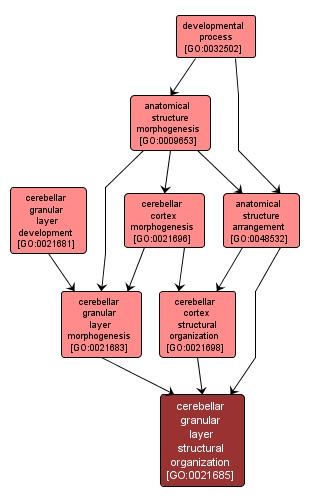| Desc: |
The process that contributes to the act of creating the structural organization of the cerebellar granule layer. This process pertains to the physical shaping of a rudimentary structure. The granular layer is the innermost layer of the cerebellar cortex. This layer contains densely packed small neurons, mostly granule cells. Some Golgi cells are found at the outer border. Granule neurons send parallel fibers to the upper molecular layer, where they synapse with Purkinje cell dendrites. Mossy fibers from the pontine nuclei in the white matter synapse with granule cell axons, Golgi cell axons and unipolar brush interneuron axons at cerebellar glomeruli in the granule cell layer. |














